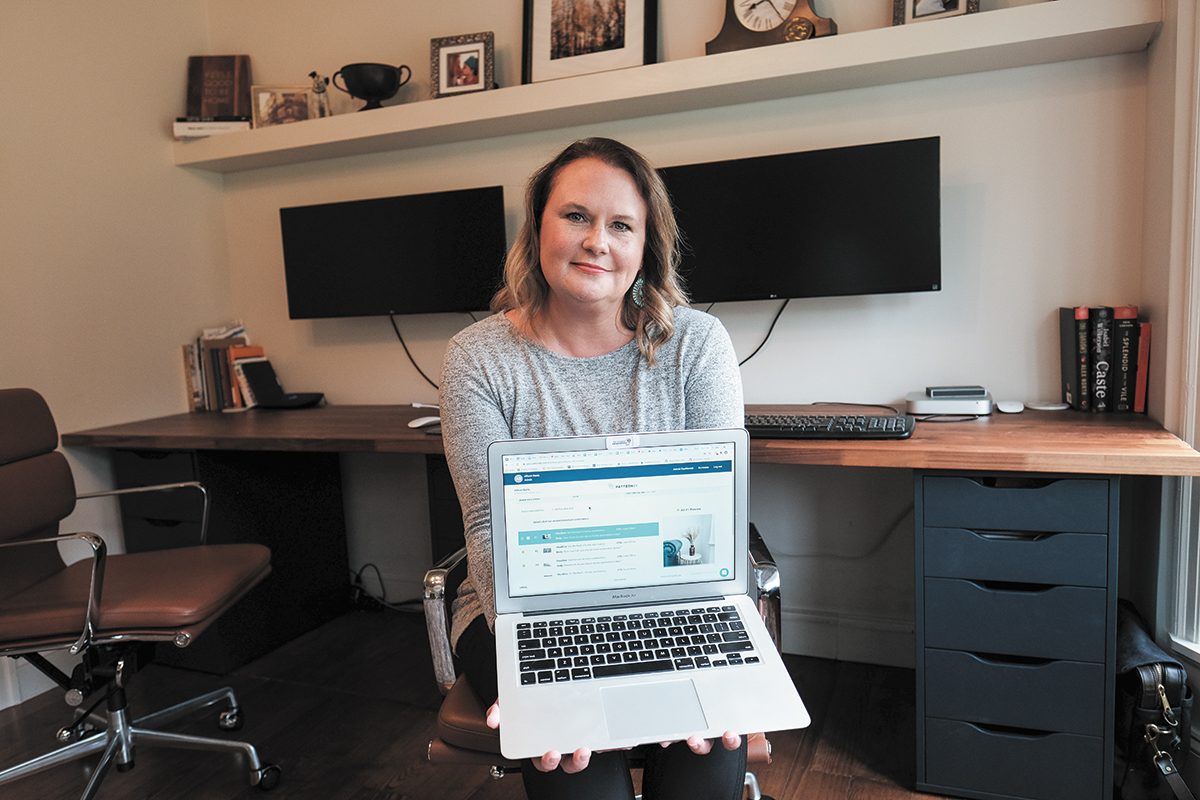Subscriber Benefit
As a subscriber you can listen to articles at work, in the car, or while you work out. Subscribe Now
Allison Bantz joined Pattern89 as chief customer officer just eight weeks ago, but she’s already got an inside line on one of the hottest commodities in 2020: predictability. The software company, a part of venture studio High Alpha’s portfolio, uses artificial intelligence to forecast and influence trends in digital advertising.
What does Pattern89 do?
We’re taking the guessing game out of marketing by analyzing, predicting and optimizing existing ads in the market. The history of advertising is, you do a lot of A/B testing, you spend money to figure out what works and then you put more behind that winning ad. We’re saying, let’s take a smarter approach for how we put new things into market and let’s predict their performance based upon historical knowledge, based upon the performance of all of these different data points we know are trending up or down.
Who are Pattern89’s customers?
We’re working with over 700 brands right now. Those range from e-commerce to health care. It runs the gamut. There are probably over 20 industries we’re working with. We also have a large base of our business that are agencies that are doing performance marketing for their customers. We’re kind of the secret sauce both for our customers and our agencies and their customers.
What does the AI specifically look for, and how is it determined that it will result in a good ad?
The type of objectives the advertiser has for that campaign allows us to understand the performance related to return on ad spend, ad click-through rate … it can actually simulate ad performance based upon those metrics.
We have a data set we call Constellation, and we’re aggregating about 175 billion data points. We’re using that data to prove and predict with 95% accuracy what is actually going to work. That will drive ROI on average about 21% in 15 to 30 days. We’re looking at placement, format, emojis, image, copy, headlines—all the elements that make an ad an ad.
How has the pandemic changed that?
We actually did do a study across 1,100 brands on Facebook and Instagram, and we did find some interesting things. In March, the use of travel imagery—think airports, airplanes—dropped 8%. We saw about a 600% increase of images or videos of people washing their hands, a 200% increase in cleanliness-related images or videos. We also saw a 30% drop in the use of human-connection imagery—think about hugging or kissing—and a greater emphasis on social-distancing imagery. Moving into the holiday season, that will be a different experience for brands and consumers.
As you look forward at what’s predicted to perform coming into Q4, some of that is what you’d expect around holidays—trees, gloves, candles. It’s interesting to see some of those things that are trending down are around the travel elements, like skiing, gifts and families.
Advertising took a hit at the start of the pandemic. Have things gotten better?
A lot of brands have taken a break during the pandemic to cut spend or they weren’t quite sure how to pivot to digital, but they are now coming back and a lot of that spend is coming to digital. Given the fact that budgets might be tighter, using those budgets to generate revenue relies on that critical element of timing, speed and accuracy. Historically, AI has been sort of scary, but now we’re all looking at how we can work smarter.•
Please enable JavaScript to view this content.
